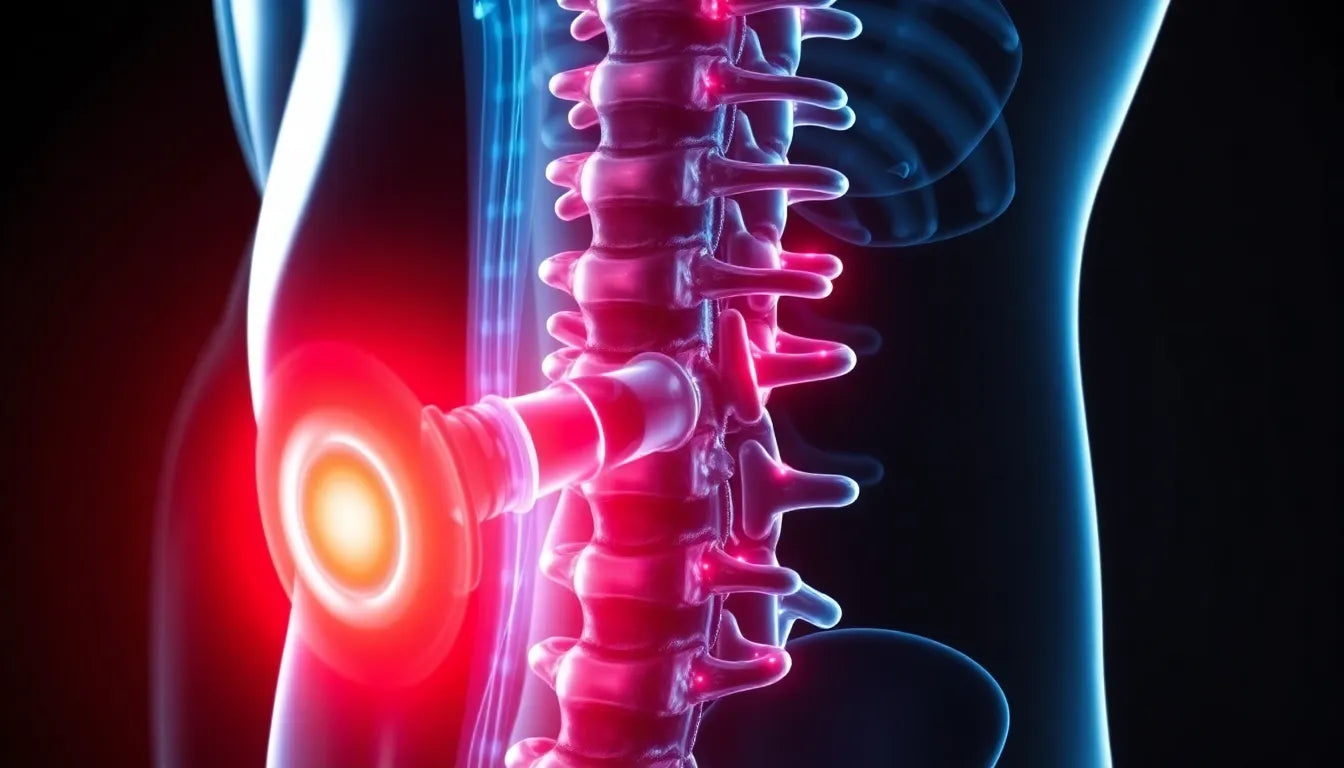Understanding how long it takes a herniated disc to heal is crucial for anyone dealing with this painful condition. A herniated disc occurs when the soft inner gel of a spinal disc pushes through a tear in its outer layer, often leading to pain, numbness, or weakness. Common causes include heavy lifting, sudden movements, or degenerative changes related to aging. Symptoms can vary but often include back pain, tingling sensations, and muscle weakness. Knowing the healing process is vital for effective recovery and can help manage expectations and improve outcomes.
The healing journey of a herniated disc
The healing process for a herniated disc is not instantaneous and can vary greatly from person to person. Several factors influence this timeline, including the severity of the herniation, the individual's overall health, and their commitment to following a recovery plan. Typically, the journey involves several phases, starting with acute pain and inflammation, progressing through gradual improvement, and potentially leading to full recovery or chronic management. This blog aims to provide a comprehensive guide to understanding what to expect during each phase of healing and how you might accelerate this process.
Importance of patience and care
Patience and proper care are essential when recovering from a herniated disc. It's important to remember that healing is a gradual process, and rushing it can lead to setbacks. Taking the time to rest, follow medical advice, and engage in recommended therapies can significantly impact the speed and success of recovery. By setting realistic expectations and focusing on consistent, gentle care, individuals can navigate the healing process more effectively and reduce the risk of further injury. This blog will delve deeper into practical strategies and insights to support your recovery journey.
Healing timeline for a herniated disc
Understanding the timeline for healing a herniated disc can help manage expectations and guide recovery efforts. The healing process typically unfolds in distinct phases, each with its own characteristics and recommended strategies for care.
Immediate phase (1-2 weeks)
In the immediate aftermath of a herniated disc, individuals often experience severe pain and inflammation. This phase is crucial for rest and pain management, which can include medications and gentle activities to avoid exacerbating the injury. Applying ice packs can help reduce inflammation, while heat therapy might be beneficial for muscle relaxation. During this period, it's essential to limit activities that strain the back to allow the initial healing to commence.
Subacute phase (2-6 weeks)
As the body begins to recover, pain typically starts to decrease, marking the transition to the subacute phase. This is an ideal time to introduce physical therapy, which can aid in strengthening the muscles surrounding the spine and improving flexibility. Guided exercises, tailored to the individual's condition, can help restore mobility and prevent stiffness. It's important to follow professional advice closely to avoid setbacks during this phase.
Rehabilitation phase (6 weeks to 6 months)
The rehabilitation phase focuses on restoring full function and gradually returning to normal activities. During this time, individuals are encouraged to engage in more structured exercise programs that enhance core strength and stability. Activities such as swimming or walking can be particularly beneficial, as they minimize impact on the spine while promoting cardiovascular health. Consistent progress monitoring and adjustments to the program can ensure a safe return to daily routines.
Chronic phase (6 months and beyond)
For some, the healing journey extends into the chronic phase, where persistent pain may indicate more complex issues. Long-term management strategies become essential, often involving a combination of continued physical therapy, lifestyle modifications, and possibly medical interventions. It's crucial to maintain open communication with healthcare providers to address ongoing symptoms and prevent future occurrences.
Factors influencing recovery
The recovery timeline for a herniated disc is influenced by various factors, including individual health and lifestyle choices. Addressing these can significantly impact the speed and success of healing.
Health and lifestyle
Overall health plays a pivotal role in recovery. Individuals who maintain a healthy lifestyle, including regular physical activity and balanced nutrition, often experience more favorable outcomes. A quick diagnosis and prompt treatment initiation can also make a significant difference in recovery time.
Exercise and physical therapy
Engaging in a tailored exercise program is crucial for recovery. Physical therapy not only aids in pain relief but also strengthens the muscles supporting the spine, helping prevent future injuries. It's important to follow a program designed by professionals to address specific needs and limitations.
Diet and nutrition
Proper nutrition supports the body's healing processes. Nutrients like calcium and vitamin D are vital for bone health, while a balanced diet rich in anti-inflammatory foods can aid in reducing swelling and pain.
Sleep habits
Quality sleep is essential for recovery, as it allows the body to repair and rejuvenate. Ensuring a comfortable sleeping environment and maintaining a regular sleep schedule can contribute to improved healing outcomes.
Avoiding smoking
Smoking can impede healing by reducing blood flow and oxygen to the spinal discs. Quitting smoking not only benefits overall health but also enhances the body's ability to recover from a herniated disc.
Signs of healing
Monitoring signs of healing can provide reassurance and motivation during the recovery process. Key indicators include a decrease in pain and discomfort, reduced numbness and tingling, and increased mobility and flexibility. Gradual improvement in symptoms, moving through stages of acute, plateau, stabilization, and long-term management, signals that the body is on the path to recovery.
By understanding these phases and factors, individuals can better navigate the healing process of a herniated disc and take proactive steps to support their recovery journey.
Continuing the recovery journey
As you progress through the healing journey of a herniated disc, it's essential to implement strategies that not only support recovery but also prevent future issues. Understanding preventive measures and exploring holistic approaches can significantly enhance your overall well-being and reduce the risk of recurrence.
Preventive measures for long-term spine health
Maintaining good posture is crucial for spine health. Whether sitting at a desk or standing for long periods, ensure your spine is aligned and supported. Proper lifting techniques, such as bending at the knees and keeping objects close to the body, can prevent unnecessary strain on your back. Additionally, managing a healthy weight reduces pressure on the spine, decreasing the likelihood of additional herniation.
Holistic approaches to support recovery
Incorporating holistic therapies can complement traditional recovery methods. Practices such as yoga and Pilates focus on flexibility, strength, and balance, which are beneficial for spine health. Acupuncture may provide pain relief and promote healing by stimulating the body's natural processes. Massage therapy can also be effective in reducing tension and improving circulation, supporting the healing of a herniated disc.
Frequently asked questions
What are the typical signs that a herniated disc is healing?
A decrease in pain, improved mobility, and reduced numbness are common signs that a herniated disc is healing. These improvements indicate that inflammation is subsiding and nerve function is returning to normal.
How can I speed up the healing process of a herniated disc?
To accelerate recovery, follow a healthy lifestyle that includes a balanced diet and regular exercise tailored to your condition. Adhering to medical advice, engaging in physical therapy, and ensuring adequate rest can also help speed up the healing process.
Is surgery always necessary for a herniated disc?
Surgery is not always required for a herniated disc. Many cases improve with conservative treatments such as physical therapy, medication, and lifestyle changes. However, surgery may be recommended for severe or persistent cases that do not respond to other treatments.
Can lifestyle changes prevent future herniated discs?
Yes, lifestyle changes can significantly reduce the risk of future herniated discs. Maintaining a healthy weight, practicing good posture, and engaging in regular exercise strengthen the spine and help prevent disc injuries.
By integrating these insights and strategies into your recovery plan, you can effectively navigate the healing process of a herniated disc and enhance your long-term spine health. Remember, patience and consistency are key to successful recovery and prevention.























